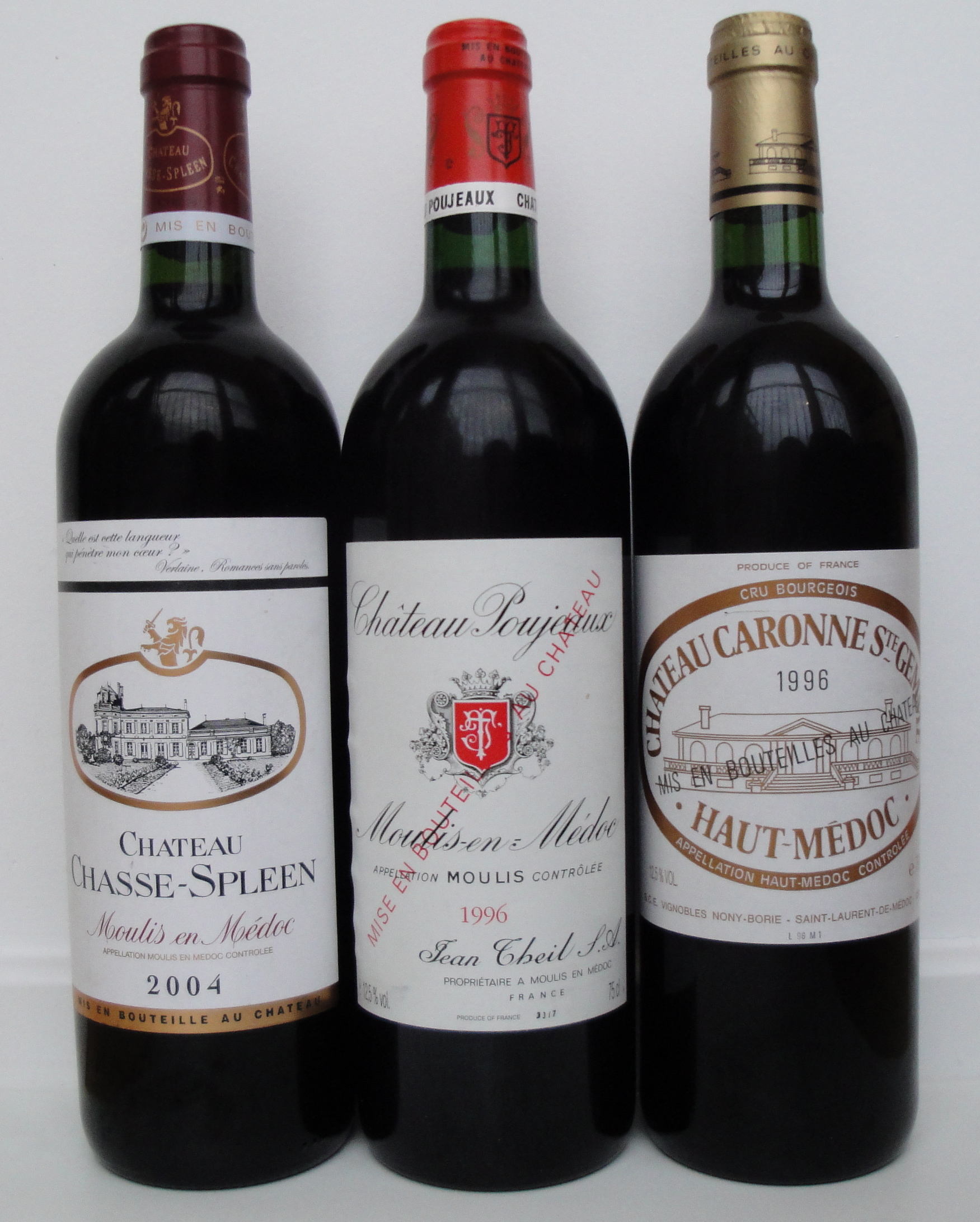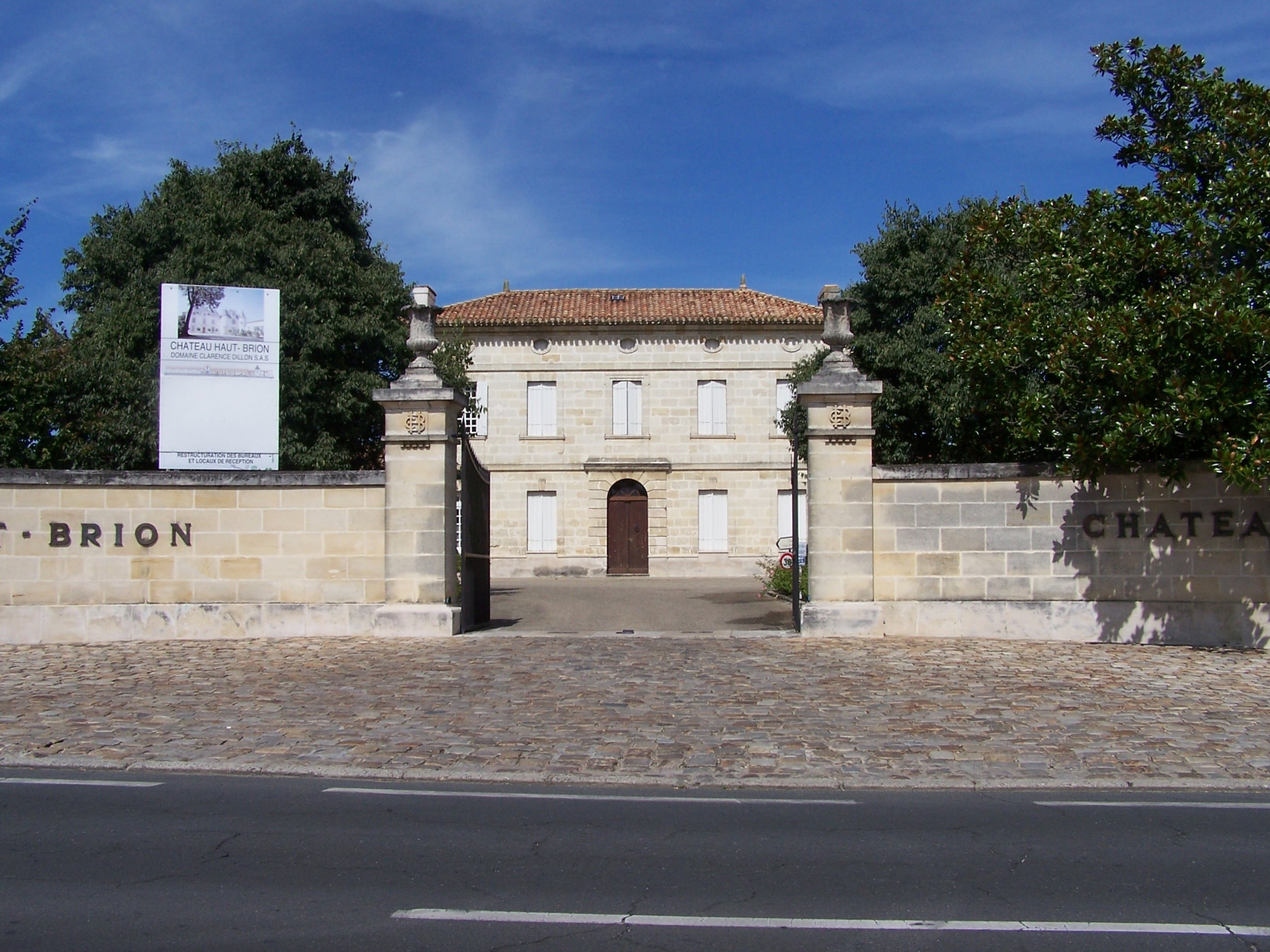|
Médoc
The Médoc (; oc, label= Gascon, Medòc ) is a region of France, well known as a wine growing region, located in the ''département'' of Gironde, on the left bank of the Gironde estuary, north of Bordeaux. Its name comes from ''(Pagus) Medullicus'', or "country of the ''Medulli''", the local Celtic tribe. The region owes its economic success mainly to the production of red wine; it is home to around 1,500 vineyards. The area also has pine forests and long sandy beaches. The Médoc's geography is not ideal for wine growing, with its proximity to the Atlantic Ocean resulting in a comparatively mild climate and high rainfall making grape rot a constant problem. It is generally believed that the nature of the region's wine derives from the soil; although the terrain is flat, excellent drainage is a necessity and the increased amount of gravel in the soil allows heat to be retained, encouraging ripening, and extensive root systems. Viticulture With the exception of Château Haut ... [...More Info...] [...Related Items...] OR: [Wikipedia] [Google] [Baidu] |
Bordeaux Wine Regions
The wine regions of Bordeaux are a large number of wine growing areas, differing widely in size and sometimes overlapping, which lie within the overarching wine region of Bordeaux, centred on the city of Bordeaux and covering the whole area of the Gironde department of Aquitaine. The Bordeaux region is naturally divided by the Gironde Estuary into a Left Bank area which includes the Médoc and Graves and a Right Bank area which includes the Libournais, Bourg and Blaye. The Médoc is itself divided into Haut-Médoc (the upstream or southern portion) and Bas-Médoc (the downstream or northern portion, often referred to simply as "Médoc"). There are various sub-regions within the Haut-Médoc, including St-Estèphe, Pauillac, St.-Julien and Margaux and the less well known areas of AOC Moulis and Listrac. Graves includes the sub-regions of Pessac-Léognan and Sauternes (among others), and Sauternes in turn includes the sub-region of Barsac. The Libournais includes the sub-re ... [...More Info...] [...Related Items...] OR: [Wikipedia] [Google] [Baidu] |
Cru Bourgeois
The Cru Bourgeois classification lists some of the châteaux from the Médoc that were not included in the 1855 Classification of ''Crus Classés'', or Classed Growths. Notionally, ''Cru Bourgeois'' is a level below ''Cru Classé'', but still of high quality (formerly there were additional grades of ''Cru Artisan'' and ''Cru Paysan''). Many wine writers consider that there is some overlap in quality between the Classed Growths and the Cru Bourgeois, although also saying that by and large the Classed Growths still represent the best wines. The first Cru Bourgeois list was drawn up by the Bordeaux Chamber of Commerce and Chamber of Agriculture in 1932, selecting 444 estates for the classification. The words ''Cru Bourgeois'' were widely used on labels by the châteaux so listed, although the classification was never officially ratified. A substantial revision of the classification, dividing it into three tiers, was initiated in 2000 and finalised in 2003. This reduced the number o ... [...More Info...] [...Related Items...] OR: [Wikipedia] [Google] [Baidu] |
Bordeaux Wine Official Classification Of 1855
The Bordeaux Wine Official Classification of 1855 resulted from the 1855 Exposition Universelle de Paris, when Emperor Napoleon III requested a classification system for France's best Bordeaux wines that were to be on display for visitors from around the world. Brokers from the wine industry ranked the wines according to a château's reputation and trading price, which at that time was directly related to quality. The wines were ranked in importance from first to fifth growths ('' crus''). All of the red wines that made it on the list came from the Médoc region except for one: Château Haut-Brion from Graves. The white wines, then of much less importance than red wine, were limited to the sweet varieties of Sauternes and Barsac and were ranked only from superior first growth to second growth. Changes to the classification Within each category, the various châteaux are ranked in order of quality and only twice since the 1855 classification has there been a change: first ... [...More Info...] [...Related Items...] OR: [Wikipedia] [Google] [Baidu] |
Graves (wine Region)
Graves (, ''gravelly land'') is an important subregion of the Bordeaux wine region. Graves is situated on the left bank of the Garonne River, in the upstream part of the region, southeast of the city Bordeaux and stretches over . Graves is the only Bordeaux subregion which is famed for all three of Bordeaux' three main wine types—reds, dry whites and sweet wines—although red wines dominate the total production. Graves AOC is also the name of one ''Appellation d'origine contrôlée'' (AOC) which covers most, but not all of the Graves subregion. The area encompasses villages including Sauternes, Pessac, Talence, Léognan, Martillac, Saint-Morillon, and Portets. The name Graves derives from its intensely gravelly soil.H. Johnson & J. Robinson ''The World Atlas of Wine'' pg 98 Mitchell Beazley Publishing 2005 The soil is the result of glaciers from the Ice Age, which also left white quartz deposits that can still be found in the soil of some of the top winemaking estates.K. Mac ... [...More Info...] [...Related Items...] OR: [Wikipedia] [Google] [Baidu] |
Gironde Estuary
The Gironde estuary ( , US usually ; french: estuaire de la Gironde, ; oc, estuari de aGironda, ) is a navigable estuary (though often referred to as a river) in southwest France and is formed from the meeting of the rivers Dordogne and Garonne just downstream of the centre of Bordeaux. Covering around , it is the largest estuary in western Europe. Named after the French ''département'' Gironde, the Gironde estuary is approximately long and 3–12 km (2–7 miles) wide. It is subject to very strong tidal currents and great care is needed when navigating the estuary by any size or type of boat. Since 2015, the Gironde estuary has been part of the Gironde estuary and Pertuis sea Marine Nature Park. Islands of the Gironde Within the estuary between the Pointe de Grave at the seaward end and the Bec d'Ambès are a series of small islands. The Île de Patiras is 200 ha in size with a lighthouse to aid navigation in the estuary. Vines and maize are gro ... [...More Info...] [...Related Items...] OR: [Wikipedia] [Google] [Baidu] |
Bordeaux
Bordeaux ( , ; Gascon oc, Bordèu ; eu, Bordele; it, Bordò; es, Burdeos) is a port city on the river Garonne in the Gironde department, Southwestern France. It is the capital of the Nouvelle-Aquitaine region, as well as the prefecture of the Gironde department. Its inhabitants are called ''"Bordelais"'' (masculine) or ''"Bordelaises"'' (feminine). The term "Bordelais" may also refer to the city and its surrounding region. The city of Bordeaux proper had a population of 260,958 in 2019 within its small municipal territory of , With its 27 suburban municipalities it forms the Bordeaux Metropolis, in charge of metropolitan issues. With a population of 814,049 at the Jan. 2019 census. it is the fifth most populated in France, after Paris, Lyon, Marseille and Lille and ahead of Toulouse. Together with its suburbs and exurbs, except satellite cities of Arcachon and Libourne, the Bordeaux metropolitan area had a population of 1,363,711 that same year (Jan. 2019 censu ... [...More Info...] [...Related Items...] OR: [Wikipedia] [Google] [Baidu] |
Château Haut-Brion
Château Haut-Brion () is a French wine, rated a ''Premier Grand Cru Classé'' ( First Great Growth), produced in Pessac just outside the city of Bordeaux. It differs from the other wines on the list in its geographic location in the north of the wine-growing region of Graves. Of the five first growths, it is the only wine with the Pessac-Léognan appellation and is in some sense the ancestor of a classification that remains the benchmark to this day. In addition to the ''grand vin'' ( LWIN 1011247), Haut-Brion produces a red second wine. Formerly named Château Bahans Haut-Brion, beginning with the 2007 vintage, it was renamed Le Clarence de Haut Brion ( LWIN 1008153). The vineyard also produces a dry white wine named Château Haut-Brion Blanc ( LWIN 1017092), with a limited release of the second dry white wine, Les Plantiers du Haut-Brion, renamed La Clarté de Haut-Brion for the 2008 vintage. History Although grapes are thought to have been grown on the property since ... [...More Info...] [...Related Items...] OR: [Wikipedia] [Google] [Baidu] |
Gironde
Gironde ( US usually, , ; oc, Gironda, ) is the largest department in the Nouvelle-Aquitaine region of Southwestern France. Named after the Gironde estuary, a major waterway, its prefecture is Bordeaux. In 2019, it had a population of 1,623,749.Populations légales 2019: 33 Gironde INSEE The famous Bordeaux wine region is in Gironde. It has six arrondissements, making it one of the with the most arrondissemen ... [...More Info...] [...Related Items...] OR: [Wikipedia] [Google] [Baidu] |
Atlantic Ocean
The Atlantic Ocean is the second-largest of the world's five oceans, with an area of about . It covers approximately 20% of Earth's surface and about 29% of its water surface area. It is known to separate the " Old World" of Africa, Europe and Asia from the "New World The term ''New World'' is often used to mean the majority of Earth's Western Hemisphere, specifically the Americas."America." ''The Oxford Companion to the English Language'' (). McArthur, Tom, ed., 1992. New York: Oxford University Press, p. ..." of the Americas in the European perception of Earth, the World. The Atlantic Ocean occupies an elongated, S-shaped basin extending longitudinally between Europe and Africa to the east, and North America, North and South America to the west. As one component of the interconnected World Ocean, it is connected in the north to the Arctic Ocean, to the Pacific Ocean in the southwest, the Indian Ocean in the southeast, and the Southern Ocean in the south (other ... [...More Info...] [...Related Items...] OR: [Wikipedia] [Google] [Baidu] |
Medulli
The Medulli (Gaulish: ''Medulloi'') were a Gallic tribe dwelling in the upper valley of Maurienne, around present-day Modane (Savoie), during the Iron Age and Roman period. Name They are mentioned as ''Medullorum'' by Vitruvius (late 1st c. BC), ''Méd(o)ulloi'' (Μέδυλλοι) by Strabo (early 1st c. AD), ''Medulli'' by Pliny (1st c. AD),Pliny. ''Naturalis Historia''3:20 and as ''Medoúllous'' (Μεδούλλους) by Ptolemy (2nd c. AD)., s.v. ''Medulli''. The ethnonym ''Medulli'' is a latinized form of Gaulish ''Medulloi''. It is generally derived from the Celtic root ''medu''-, meaning 'mead, alcoholic drink' (cf. Olr. ''mid'', MW. ''medd'', OBret. ''medot''), and thus may be translated as 'those who drink mead'. This interpretation is encouraged by the mention, in Vitruvius' '' De architetura'', of a "kind of water" (''genus aquae'') drunk by the Medulli. Alternatively, Javier de Hoz has proposed to glose the name as 'those who lived in the middle', or 'in the border ... [...More Info...] [...Related Items...] OR: [Wikipedia] [Google] [Baidu] |
Vineyard
A vineyard (; also ) is a plantation of grape-bearing vines, grown mainly for winemaking, but also raisins, table grapes and non-alcoholic grape juice. The science, practice and study of vineyard production is known as viticulture. Vineyards are often characterised by their ''terroir'', a French term loosely translating as "a sense of place" that refers to the specific geographical and geological characteristics of grapevine plantations, which may be imparted to the wine itself. History The earliest evidence of wine production dates from between 6000 and 5000 BC. Wine making technology improved considerably with the ancient Greeks but it wasn't until the end of the Roman Empire that cultivation techniques as we know them were common throughout Europe. In medieval Europe the Church was a staunch supporter of wine, which was necessary for the celebration of the Mass. During the lengthy instability of the Middle Ages, the monasteries maintained and developed viticultura ... [...More Info...] [...Related Items...] OR: [Wikipedia] [Google] [Baidu] |


_b_069.jpg)





